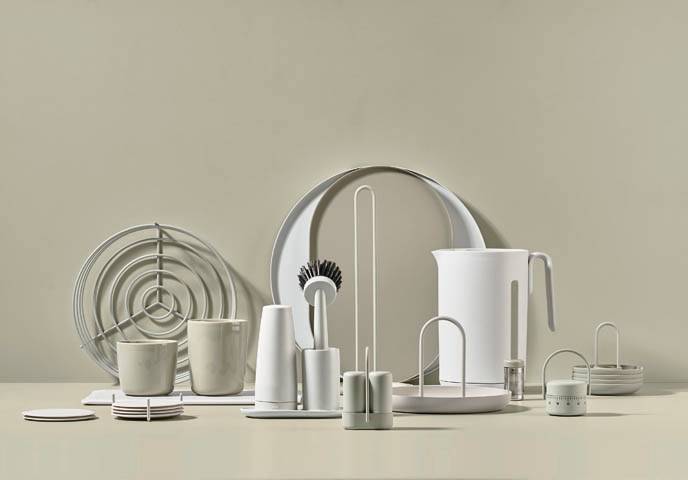Creating Minimalist Design with a Humble Heart
Interview With Xiaomi Ecosystem Industrial Design Director Li Ningning

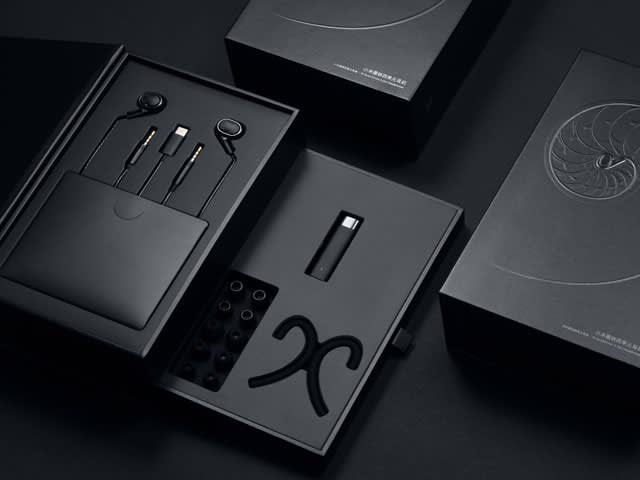
Xiaomi earphones, Xiaomi bands, Xiaomi Bluetooth speakers, Xiaomi washing machines, Xiaomi robotic vacuum cleaners, Xiaomi rice cookers, Xiaomi desk lamps, Xiaomi power strips... these design products are mostly with round or square shapes, minimalist design, creamy white color, and delicate style, which you and your family or friends must have owned, or heard of, or habitually purchased. But did you know that these products with "Mi Look" style were designed mostly by the industrial design team of Xiaomi Ecosystem?
In 2014, Xiaomi launched the Ecosystem Strategy to develop its IoT (Internet of Things) plan. So far, Xiaomi has invested in over 300 hardware and software ecosystemic companies. Through cooperation with these ecosystemic companies, Xiaomi has extended its product range from smart phones to 3C products, household appliances, and consumables, among others. The countless top-notch products are now sold in more than 90 countries and regions around the world. In addition to Xiaomi products' unwavering focus on good quality and reasonable price, what attracts and retains the "Mi Fans" (Fans of Xiaomi) is the minimalist, stylish, modern design of these products.

As we all know, Xiaomi Group attaches great importance to design. Xiaomi Founder Lei Jun once put forward the proposal at the Two Sessions (NPC and CPPCC) to "vigorously develop the design industry in China and comprehensively improve the level of Chinese design." Two of the seven co-founders of Xiaomi used to be designers. Owing to the attention of Xiaomi Group and the efforts of its design team, Xiaomi has won over one hundred international design awards in recent years. In fact, in 2020 Xiaomi is the first Chinese company to have won the highest awards of all the big four international design awards within one year. The Xiaomi Ecosystem’s "Mi Handheld Vacuum Cleaner" once again won the highest honor of iF DESIGN AWARD – the iF DESIGN AWARD 2020 Gold. At the same time, the in-house design team of Xiaomi ranked in the "Top 10 Inhouse Design Teams 2016-2021" of iF DESIGN AWARD. Xiaomi’s products are now undoubtedly the jewel of "Made in China."
Even in 2021, Xiaomi continues its success story at the iF DESIGN AWARD. This year, with the new two-step jury process undergone by all participants and jurors, 35 Xiaomi entries were selected for the Final Jury, of which 27 entries won an iF DESIGN AWARD 2021.
COMPILATION OF XIAOMI´S iF AWARDED ENTRIES IN 2021

Redmi K30 Pro - smartphone

Mi 34-inch Curved Monitor - monitor

MIUI Nature Sound System - smartphone sound system
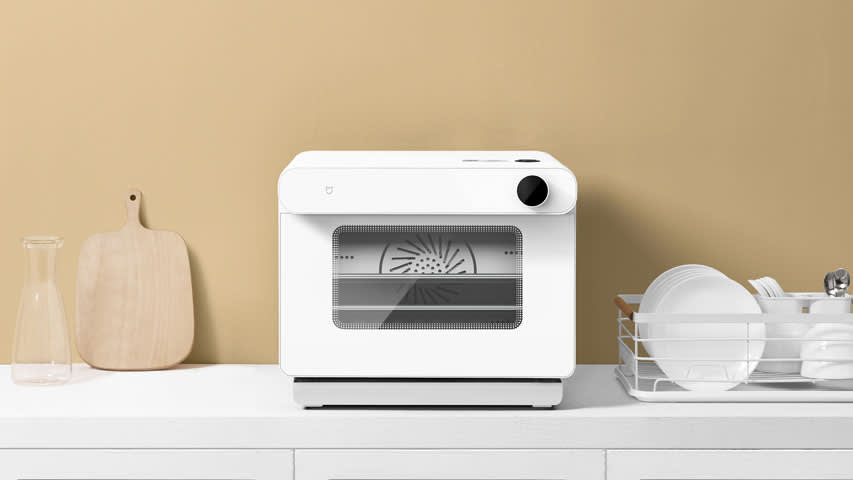
Mi Smart Steam Oven - steam oven
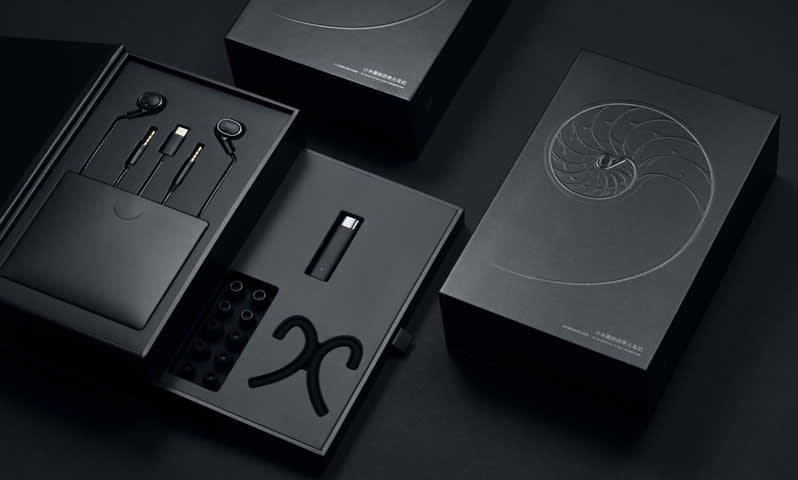
Mi Quad Driver In-Ear Headphone - earbud packaging

Redmi K30 Pro - smartphone

Mi 34-inch Curved Monitor - monitor

MIUI Nature Sound System - smartphone sound system

Mi Smart Steam Oven - steam oven

Mi Quad Driver In-Ear Headphone - earbud packaging
Today, Xiaomi has become the youngest of the world’s top 500 companies. The Xiaomi IoT platform now connects more than 252 million smart devices, many of which were produced by Xiaomi Ecosystem – Xiaomi products have been providing one-stop service for consumer products. While bringing a better life experience to countless Xiaomi users, the product design has become an important means for users to identify the Xiaomi brand – Xiaomi is one of the few Chinese companies with exclusive and distinctive design style.
So, how has the Xiaomi Ecosystem Industrial Design Team been developing design in accordance with Xiaomi Group's business strategy? How did the design team unify the numerous products in different categories into the "Mi Look" style? What are their design philosophy, design process, and design management? How does the design team cooperate with the ecosystemic companies and the engineering technicians? With these questions in mind, Package & Design conducted an exclusive interview with Ms. Li Ningning, Industrial Design Director of Xiaomi Ecosystem, who has been leading the industrial design team of Xiaomi Ecosystem in the design of hundreds of products. We also selected some exceptional design works of Xiaomi Ecosystem to share with our readers.
XIAOMI´S DISTINCTIVE DESIGN STYLE
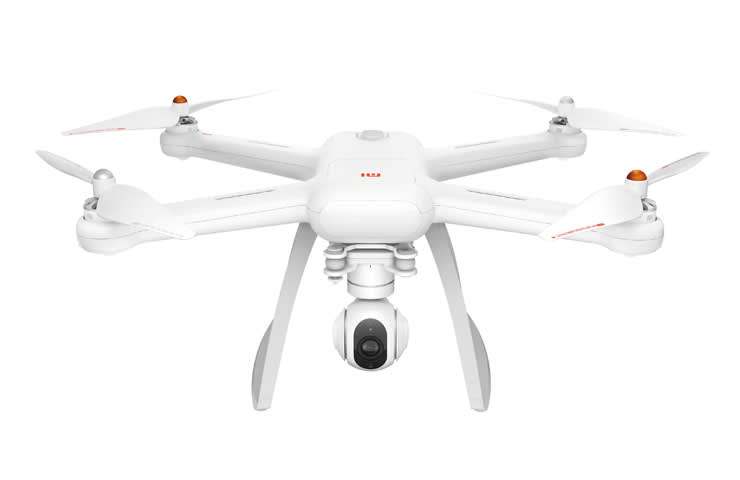
Mi Drones

Mi Front-Load Washer and Dryer Pro
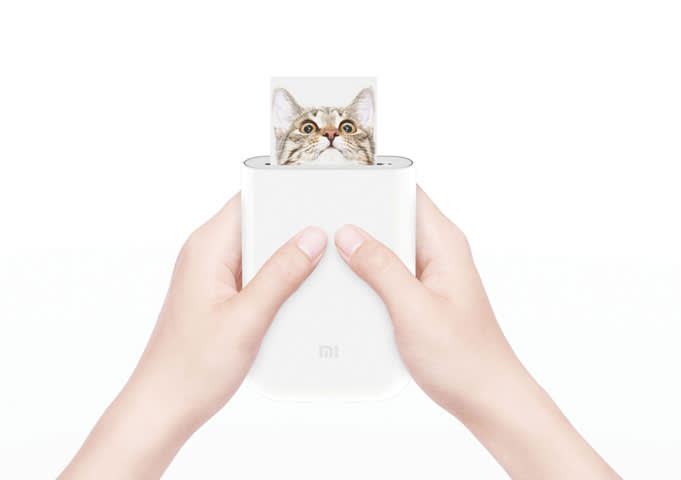
Mi Portable Photo Printer

Mi Bluetooth Headset

Mi Desk Lamp Pro
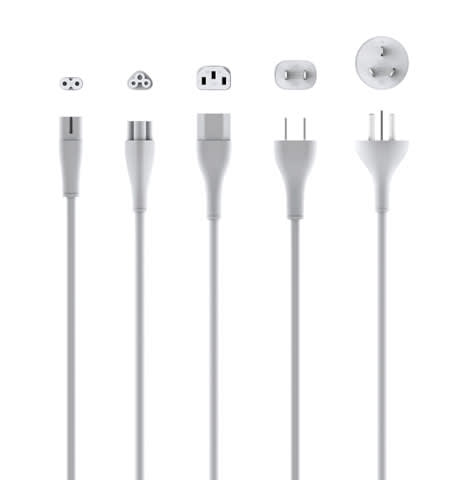
Mi Cable Series

Mi Drones

Mi Front-Load Washer and Dryer Pro

Mi Portable Photo Printer

Mi Bluetooth Headset

Mi Desk Lamp Pro

Mi Cable Series
Interview With Xiaomi Ecosystem Industrial Design Director Li Ningning
Published by courtesy of Package & Design
The Xiaomi Ecosystem's iF DESIGN AWARD 2020 Gold
First, let me congratulate you and Xiaomi for winning the iF DESIGN AWARD 2020 Gold for your Mi Handheld Wireless Vacuum Cleaner! What are the design concepts that are embodied in this product? What was the design process? In a crowded marketplace, what makes the Mi Handheld Wireless Vacuum Cleaner unique in the market? How has the market responded?
Awarded with iF DESIGN AWARD Gold

Mi Handheld Wireless Vacuum Cleaner
This vacuum cleaner is compact but powerful. Equipped with a 350W brushless motor, it's capable of 100AW of suction. The 9-cone separation technology maintains constant suction, while minimizing clogs. The heaviest fan and battery parts are placed in front and under the handle, making the center of gravity of the whole vacuum closer to the palm of the hand when user holding it. This makes it easier to push and move around.

COLORS
Overall, the device uses simple grays and whites, with light touches of iconic Xiaomi orange in the core section. This simple design continues Xiaomi's design philosophy while looking at home in anyone's home. Winner of the 2020 iF DESIGN AWARD.
In the last few years, Xiaomi products have won over 150 design awards internationally. Is it a company tradition for Xiaomi to participate in these competitions? How important is it for Xiaomi to participate in and win these awards? As there are countless Xiaomi products, how do you decide which ones will participate in the competitions? Does Xiaomi have an internal process to decide which products will enter the competitions?
LN: Our designers and developers put their heart and soul into the products, so we are always humbled and appreciative to win every award! We do not design products to win awards, we design products to continually improve the lives of our customers.
Our attitude towards award competitions has evolved over the years. Originally, every design competition was an opportunity to show the world what we are capable of, yet now it is more like a recurring activity to participate. The awards no longer effect our vision, and we do not feel upset if we miss out. Each time we win an award, we just take a moment to celebrate and recognize the achievement. However, we still hold that it is important to enter these competitions. Not only is it important to respect our competitors within the industry, it also helps keep our products relevant in the public eye. We can't forget that it also provides an important affirmation of the great work of our designers.
We mainly participate in several international leading industrial design awards each year. Xiaomi's own team applies for a small number of awards. The reason we win quite amount of awards is due to the fact that all of our ecosystem companies enter as a team. Many of the award-winning products are entered by Mi Ecosystem Companies on our behalf. Each company enters one or two products, helping share around the application fees and paperwork. As for selecting candidates, our own team always choose products that excel in design, technological innovation and user experience. If they only "look good" without the other factors, they will not be selected. In addition, the entries we submit are all mass-produced products that customers can purchase. We do not apply for conceptual design awards.
About Li Ningning
Could you please tell us a bit about your own educational background, how you joined Xiaomi and the work you have done at Xiaomi? I've heard that you were Xiaomi's 79th employee. Is this true?
LN: I graduated from the Industrial Design Department of Shanghai Jiao Tong University in 2004 and applied to study abroad after working in China for two years. In the end, I chose Art Center College of Design in California because my boss at the time was an alumnus of the College's Transportation Design Department (The ACCD Transportation Design Department is very well-known within the industry). He introduced that ACCD is "the cradle of baby star designers", and suggested that I study there, so I went to study graduate of industrial design specializing in design strategy. I returned to China in 2009.
I joined Xiaomi in February 2011 (Xiaomi was established on April 6, 2010). There are three reasons for joining this start-up: First, I was invited by co-founder Liu De. De was my senior at ACCD. We knew and trusted each other. The second reason is the advice that I received from a female programmer friend at the time. She said to me, "You are about to jump into the wave of mobile Internet, and the design industry is relatively stable. Even if it doesn't work out, you can always return to the design industry. But if you miss this wave, who knows when the next one will come." The third reason is that the company's entrepreneurial team was amazing. Mr. Lei (Lei Jun) amassed a great group of talents from top companies including Google, Microsoft, Motorola, etc. Many people smarter than me joined one after another. Why should I hesitate? I wanted to see what I can accomplish in such a startup.
I was Xiaomi's 79th employee. I was hired in the second recruiting round. When Xiaomi was first established, there were only three or four people in the industrial design team. As I had absolutely no experience in designing mobile phones, the first three years (2011-2014) were basically designing mobile phone accessories, such as mobile phone cases, mobile phone lanyards, and power banks. However, it is precisely these three years that had given me the opportunity to accumulate valuable experience in the development of mass-production hardware products. This was truly a period of growth for me.
I joined the ecosystem team in 2014 since it was established. That was such a fun and exciting time! As we kept on expanding into new product categories, the team's design capabilities kept growing. My mass-production design experience became indispensable for developing the ecosystem portfolio. Looking back, without the previous work experience, and graduating from ACCD, I would not have been able to directly drop into the ecosystem role.
As the Xiaomi Ecosystem Director of Industrial Design, how many product designs have you led over the years? Have you been keeping count?
LN: I've lost count. There's been so many, and they just keep coming! It has been about six years since I joined the ecosystem. If you use SPU (standard product unit) to count, there are hundreds. If you count by SKU (stock keeping unit), including large and small product categories and product upgrading there are up to one thousand.
I heard that you are sometimes referred to as the "Iron Woman". What's the story behind this name?
LN: It's more of a self-deprecating name really. It's because when I support a design, I dig in to the end, yet if it's an unqualified design I won't hold back what I think. When people first meet me, I can come across as someone who sticks to my guns. So the name's a way to not take myself too seriously.
The Xiaomi Ecosystem and other Products
Since Xiaomi launching its ecosystem strategy in 2014, how many ecosystem companies has Xiaomi invested in so far? Are they all hardware/physical goods companies? What is the relationship between Xiaomi and these companies?
Xiaomi has invested in both software and hardware companies, with over 300 companies receiving investment and joining the ecosystem.
Xiaomi only invests in these companies (owning some equity) and is not holding these companies. We collaborate with these companies to develop products branded with "Xiaomi" "Mijia" or "Mitu". For these products, Xiaomi will heavily participate in product definition, design and development, advertising and sales.
In addition to cooperating with Xiaomi, ecosystem companies also make products under their own brand. These brands and products are not related to Xiaomi. These companies are not controlled or constrained by Xiaomi, yet nor will they become dependent on Xiaomi.
There are three brands: "Xiaomi", "Mijia" and "Mitu". Why are there three separate brands and how are they positioned?
LN: The three brands are set up separately because some categories of the Xiaomi Ecosystem chain are not suited to the MI brand, so the "Mijia" and "Mitu" brands have been added to differentiate the brands and avoid brand generalization.
"Xiaomi" is a technology brand, "Mijia" is for household and lifestyle products, and "Mitu" is for children's products (Xiaomi’s cartoon mascot is named Mitu (Mi Bunny), hence the name of the "Mitu" brand). The "Mijia" brand is positioned as a "smart life" brand, so home and life products developed by Xiaomi will be branded with "Mijia".
COMPILATION OF XIAOMI SMART HOME APPLIANCES AND DEVICES
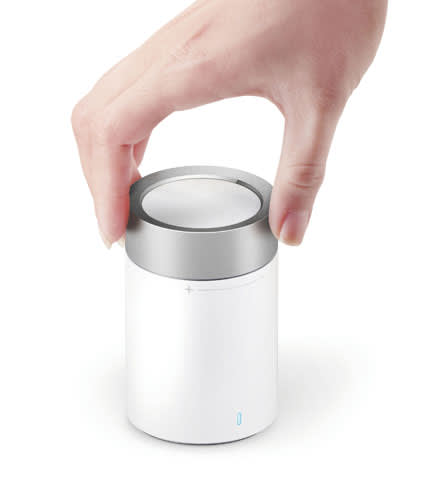
Mi Pocket Speaker

Mi Smart Door Lock
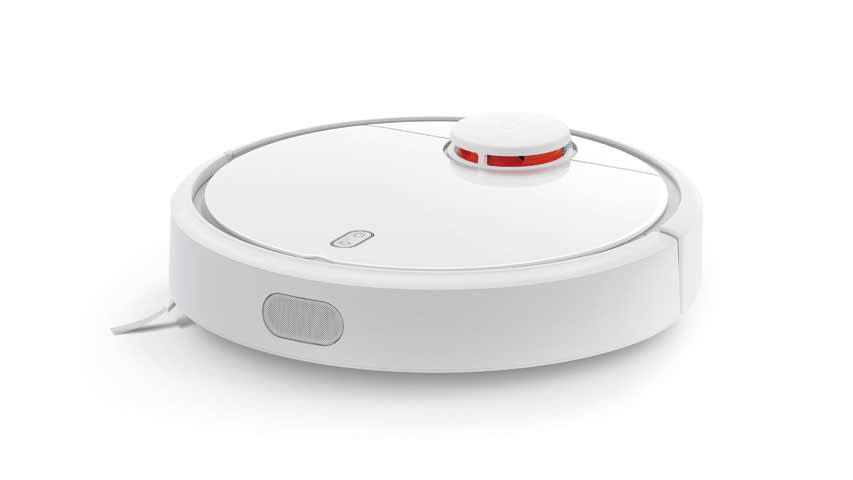
Mi Robot Vacuum
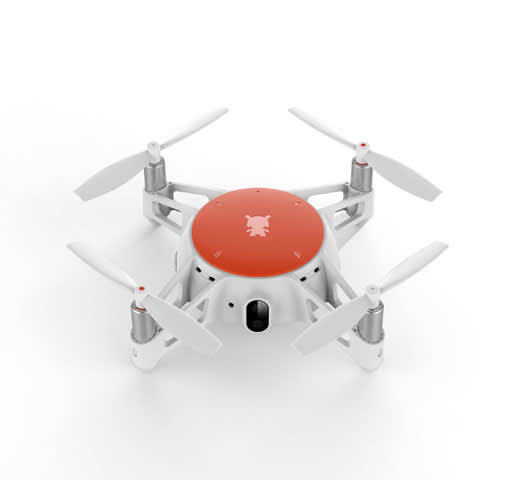
Mi Drone Mini

Mi Sphere Camera
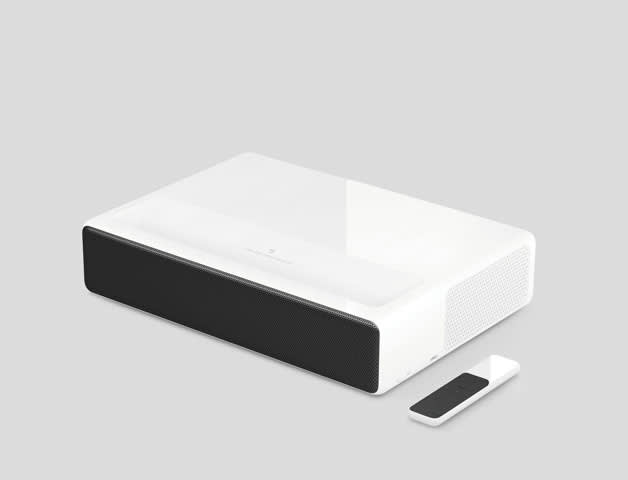
Mi Laser Home Cinema 150”

Mi Pocket Speaker

Mi Smart Door Lock

Mi Robot Vacuum

Mi Drone Mini

Mi Sphere Camera

Mi Laser Home Cinema 150”
Up to now, what types of products have been incubated by the Xiaomi Ecosystem? Do ecosystem products have to be able to connect to Xiaomi's IoT (Internet of Things) system? How many smart devices are currently connected to Xiaomi's IoT system?
LN: We have very diverse categories such as wearable, smart home appliances and devices (such as cameras, sensors, door locks, control hubs, etc.), lighting, home theatre, transportation, personal care, mobile phone peripheral accessories, children's products and so much more.
Of course, not all products need to be able to connect to Xiaomi's IoT system. This isn't due to hardware limitations, but the fact that not all products are suited to having IoT functionality. Not only do people not need every item connected to the internet, adding the components needed for IoT integration such as chips and Wi-Fi modules will increase the cost.
Right now, 250 million devices are connected to Xiaomi's IoT system.
The Xiaomi Ecosystem mainly redevelops and recreates existing products on the market, so who usually decides which products to develop? Are you involved in those strategic discussions? What factors are considered when selecting a product to develop?
LN: The Xiaomi Ecosystem mainly redefines and redesigns existing products and adds certain technological innovations.
Usually, the development of a new product is initiated by a product manager or the sales department. Before the new product project is approved, they will consider all aspects in advance, including the views of the industrial design team. At this stage, we will discuss these factors based on the product roadmap of Xiaomi Ecosystem, and we will propose design directions and ideas. We call this "pre-research".
We are more "nosy" designers. In addition to judging the design direction of the product, we will also challenge whether the product definition is reasonable and clear, where the product is on/if it exists on the roadmap, and whether the price range between different products is satisfactory. Furthermore, what advantages do competing products possess, and are the pain points "real", not just assumed etc.
The product manager will study and ascertain the BOM (bill of material) costs based on our design ideas, discuss with us cost controls, the features and specifications as well as refuting our challenges (such as through using data or customer feedback.
These are cooperative exchanges between all sides. If we don't challenge their ideas, the product plan may falter. Product managers also need this kind of discussion. If everyone reports that the project is not in the company's interest, they will be challenged by upper management when the project meeting is held. The final decision is decided by the top manager in charge of Xiaomi Ecosystem Department.
This means that for every new project, there are in-depth discussions at the start. So as a designer, I'll give my honest feedback as part of this process. This is where my name "Iron Woman" comes from.
The Xiaomi Ecosystem Design Team
Could you give us a quick overview of the Xiaomi Ecosystem design team?
LN: Our design team is no more than 20 people, with most of them being industrial designers, and some of them are CMF (color, material and finish) designers.
Our team has maintained the same personnel for quite some time, and the designers are highly responsible and self-disciplined. After several years of working together, we know each other well which facilitates cooperation. We also all cherish the platform and product diversity of the Mi ecosystem.
What creative modes do your team usually adopt? Is there an internal competition for important projects? What is the creative atmosphere like?
LN: I myself use a wheel-based work model, and I am responsible for discussing and formulating design directions, design reviews and solving difficult problems that the team may face. Junior designers are responsible for specific design implementation and subsequent mass production tracking.
Most of our projects are done by a single designer from start to finish, and sometimes a senior designer participates in discussions and helps solve problems during the process. Many complex products are best suited to be completed by one single person, as these projects require an in-depth understanding of both the product's hardware and structure. If the design tasks are taken apart and assigned to different people, it is quite difficult to handle. Therefore, our designers own a single project from the very beginning to the end.
We usually want to be clear about the design direction, and then begin implementing it. There are very few internal competitions. Only on the occasion we encounter projects with uncertain directions, I may ask two designers to try several different directions separately and get them to converge their proposals as soon as possible after the directions are clear. As our time to explore the proposal is limited, we don't spend much time for separate drafts.
I don’t encourage team to work overtime unnecessarily, so they don't rush, enjoy the process and put forward the best possible work. The truth is, if we think thoroughly at the beginning, we are more efficient, and can completely focus on the job at hand.
The Xiaomi Ecosystem Product Design Style
Xiaomi Ecosystem products have a clear, recognizable and beautiful "Mi Look" style. Can you discuss with us how Xiaomi's ecosystem design style developed?
LN: The product style firstly originated from Xiaomi's design philosophy, namely Rationality, Practicality, and Universality. Second, we knew from the beginning that the product categories involved in the ecosystem would become more and more diverse, so we chose "Simplicity" as the basis of design. We do not even need a written "Style Guide". We already are able to unify the many products that many designers have created in a consistent design language.
The ecosystem's products don’t come in one style. For example, the "Mitu" brand covers children's products (including roller suitcases, scooters, toothbrushes, reading pens, etc.). These products are not neutral and minimalist styles, but cute and Macaron-colored. This gives "Mitu" its own unified style. As for why it’s easy for everyone to recognize Xiaomi Ecosystem products, it’s because we have continually refined our design concepts for years, we didn't just keep chopping and changing our design. Over time, Xiaomi products have become more and more recognizable. This is related to the stability of our product identity.

The scooter is intended for children between 3-6 years of age, and safety was a paramount consideration during its design. Its soft rubber handles are integrated into a C-shaped curved design, perfectly replicating the gripping angle of the kids’ hands, while also designed to act as a buffer, by completely covering metallic cross-sections and joints, preventing possible bumps and scratches, and giving the child even greater protection. The handlebars can be removed with the press of a single button, and are then strapped to the underside of the footboard for easy transportation and storage. The front of the scooter has gravity steering and dual-spring suspension, making it safe and easy to use. The scooter offers two riding modes, with wide and narrow wheelbases, giving children a variety of fun riding experiences. Its large footboard has a load capacity of up to 50 kg, while the double molding TPR slip-proof points also contributes grabbing anti-slip. There are a range of footboard colors to choose from, while the scooter’s generously sized PU wheels with flashing LEDs make night-time riding even safer.
Managing the Xiaomi Ecosystem Designs
Is your team responsible for designing the Xiaomi Ecosystem products? Or are the designers of the Mi Ecosystem Companies responsible for the designs? How does Xiaomi manage all the product designs through its ecosystem? Does Xiaomi have a set of design standards for its ecosystem?
LN: Mi Ecosystem Companies do not necessarily have their own design teams. Some of the ecosystem products are designed by our internal team; some of them are designed by the design teams of the ecosystem companies, wherein our team will be responsible for reviewing the designs and providing guidance. Regardless of the cooperation mode, our team will participate in the design or will control most projects. Reviewing design ideas and design quality is our team's responsibility. We consider all the details of the product one by one.
As for design standards, as I just mentioned we don't have a written Style Guide. Our overall design thinking and the bottom-level design logic is: Keep the hardware design rational, use basic geometric forms, and get rid of unnecessary decorations. This logic fits the needs of the diverse product categories of Xiaomi's ecosystem. It would be difficult to implement a one-size-fits-all Style Guide for the diverse product categories.
However, we only manage the designs of the products of which Xiaomi and Mi Ecosystem Companies cooperate. We will never interfere with the design style of those companies’ own branded products.
Does Xiaomi have a training program for its Mi Ecosystem Companies?
LN: I personally think that it is difficult to achieve results through courses and trainings. The designers of the Mi Ecosystem Company will refer to our existing products and then make a design that they think is in the style of Xiaomi. Every time when I start working with a new design teams, I remind myself that we may not achieve an excellent proposal in a short time. It's worth spending a bit of time to perfect our designs.
For the design projects executed by these companies, we will control the every single details, as if it was our own internal project. It usually requires multiple rounds of changes, as well as fine prototyping. As the time of collaborations increases, their designers, hardware and mechanical engineers will further understand Xiaomi's demands and criterion. Therefore, no matter how good the training may be, it is not as effective as actually doing several projects. Of course, we cannot rule out that even though some companies have cooperated with us for a long time, the design quality may still not be qualified. At this stage, all we can do is take the design back and put our own hands on.
Who has the power to make the final decisions for ecosystem projects? Do you have veto power? How do you decide which designs to reject?
LN: Opinions of product manager, hardware manager, quality controller, project developer and sales persons should be taken A: The design must integrate the opinions of product managers, hardware mechanical engineers, quality assurance, project management, sales and even after-service. No one has the final say, and I don't have a veto. I feel that uni-lateral decision-making is not conducive to employing everyone's professionalism and skills, as well as the joint creation of good products.
My own standards are: 1. There is no room for dispute over appearance similarities with competing products. 2. The build quality meets the quality control requirements. 3. The product has a good user experience.
The Design Process and Methods for Xiaomi Ecosystem Products
What is the design process and methods for designing Xiaomi Ecosystem products? What stages does a product go through from the design conception to product launch? At what stage does the design team become involved in the product development process?
LN: The first step in the development process is that the product manager and sales team initiate what to produce, and they propose a plan.
The second step is the pre-research stage, where the hardware, and project management teams will convene to calculate the break-even point of the project, time to market requirements, and so on. While our design team will evaluate the approximate design direction, estimated feasibility, cost and design development time and more.
Once the evaluation is complete, and every function team agrees on the feasibility, the third step is the project establishment meeting. When everyone cannot reach a consensus, they will also go to the project meeting to have an intensive discussion. If management consider different opinions and conclude that the proposed product is not competitive or well thought-through, they will reject it.
Once the project is confirmed, the design team can begin investing time. During this stage, designers will continually communicate with product managers, and other departments such as hardware, mechanics, to modify their proposals and sometimes conduct user research (quite often we have disagreements over appearance, hardware and cost control. If everyone still cannot reach a consensus, we will use the design prototype to conduct user research, and let the resulting data guide our actions). We will also produce fine prototypes (all products are required to have design (sometimes plus working) prototypes made to represent the physical appearance, structure and function. These prototype validations are all part of DFM (Design for Manufacturing) work.
After the design is finalized, the next step is to make tooling and undertake several rounds of trial build to solve the issues in the mass production. A certain batch of mass production products will undergo large-scale internal testing. Smart products always require software upgrades, and taking time for debugging. Finally, a golden sample is signed off if all parties are satisfied with the outcome.
Once signed off, the designer's work is basically completed, and the marketing department begins to prepare for the launch events. When the product goes on sale, the designer finally begins to be at ease, and can take a breath again.
Therefore, in the pre-research stage of the product and before the project is established, the design team has already been involved. This ensures that we are not just passively accepting the product brief, and not only designing the outer appearance, but sometimes challenging the product manager's product definition.
COMPILATION OF XIAOMI PRODUCTS FOR KITCHEN AND HOUSEHOLD
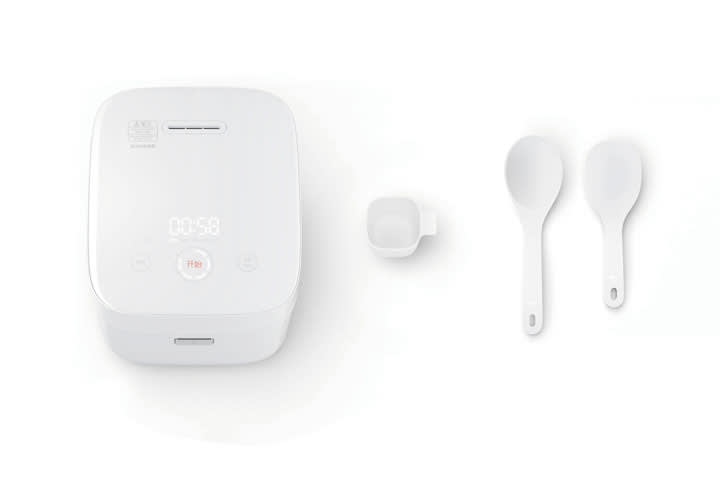
Mi Induction Heating Rice Cooker

Mi Induction Cooker

Mi Automatic Foaming Soap Dispenser
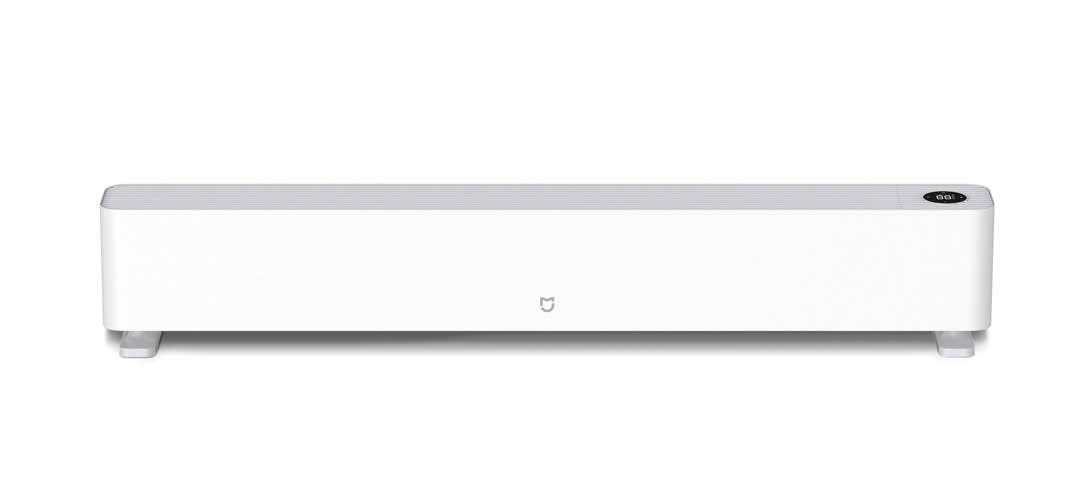
Mi Baseboard Electric Heater

Mi Fresh Air Ventilator
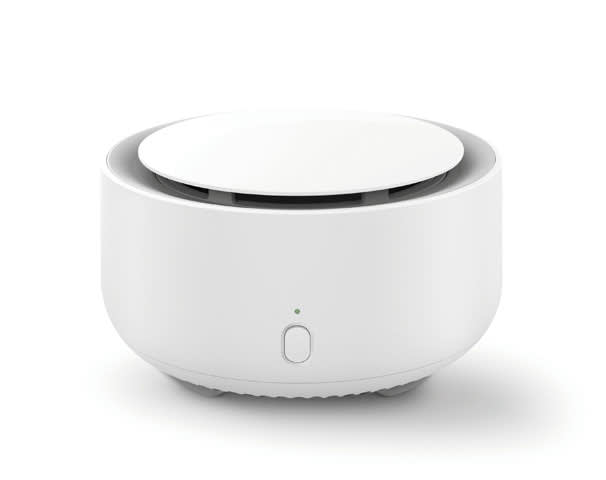
Mi Mosquito Repellent

Mi Automatic Air Freshener Dispenser

Mi Induction Heating Rice Cooker

Mi Induction Cooker

Mi Automatic Foaming Soap Dispenser

Mi Baseboard Electric Heater

Mi Fresh Air Ventilator

Mi Mosquito Repellent

Mi Automatic Air Freshener Dispenser
"Good design must be achieved through collaborative work with the engineering department. Everyone works together and this positive collaboration often results in good outcome and high efficiency."
In the product development process, how does your design team cooperate with engineers and other technical personnel? When design and technology clashes, is it generally necessary to compromise the design? Can you share your communication strategies for when working with engineering and technical personnel?
LN: Good design must be achieved through collaborative work with the engineering department. Everyone works together and this positive collaboration often results in good outcome and high efficiency. If we talk about communication strategies and skills, it's that our design team is very clear in what we want, and doesn't easily concede. This strong style seems to make everyone more "fearful", knowing that working with us may prove challenging.
We often start from the designer's mass production experience to further challenge what is possible in regards to the hardware and structure. We especially like to "squeeze" the margins such as space, size, tolerance, alignment, assembling and surface finish. If the ecosystem collaborative company has a conservative attitude, and does not want to take risks, we will push them harder to achieve excellence. To what point? Our goal is to push the boundaries of our designs as far as they can go without compromising reliability. For large products, this may be millimeter-scale, and for small products this may be 0.1 millimeter. If the hardware and mechanical engineers is resisting, the designer will help them find a way, or even propose a plan. For example, for our three-in-one power strip, to make it compact as possible we asked the hardware engineer of the ecosystem company Qingmi to redevelop the standard three-in-one switch that has not been updated for nearly two decades. Basically, we urged them to make a brand new plug design. We challenge every aspect of every product we create. Through this attitude, the overall impression given to consumers is that "Xiaomi's products are ingenious and compact."
However, if we encounter some technical difficulties, because the appearance requirements affect product performance or user experience, or if we encounter red lines that we never want to cross (such as national standards, safety regulations, etc.), we will modify our design to meet the rules.
In summary, in order to create an excellent product, we must rely on the long-term joint efforts of everyone for the best outcome.
To be the leader that you are, you must be very familiar with all the products and related regulations, but as the Xiaomi Ecosystem is so broad, how are you able to lead the team and be across all the products?
LN: There are a lot of "know-hows" that I need to know for hardware products. As designers, we must respect these "know-hows". We cannot arrogantly ignore this and that as we want. There are indeed many ideas or practices that cannot be realized. In these cases, we need to step back and undertake necessary pre-research.
I remember that when we made the first generation of the Mi Band back in the early days, there were not many people in our team, so I did my own research and studied dozens of wristbands, from both Chinese and international brands and spent a lot of time studying the positives and negatives of each product. I digested all the key points and explained them to the designers. Now, as our product range ever increases, it's not possible for me to undertake that level of research each and every time. This is now for the designers to do. Once the designer is assigned the project, they will need to do a variety of "homework" study, including reviewing the current marketing, positioning and hardware of competing products, specific "know-hows", all in order to understand the product as much as possible. When I have doubts, I ask designers why they want to design in this way and why they don’t do that. Gradually, they naturally develop their own pre-research methodologies and routines.
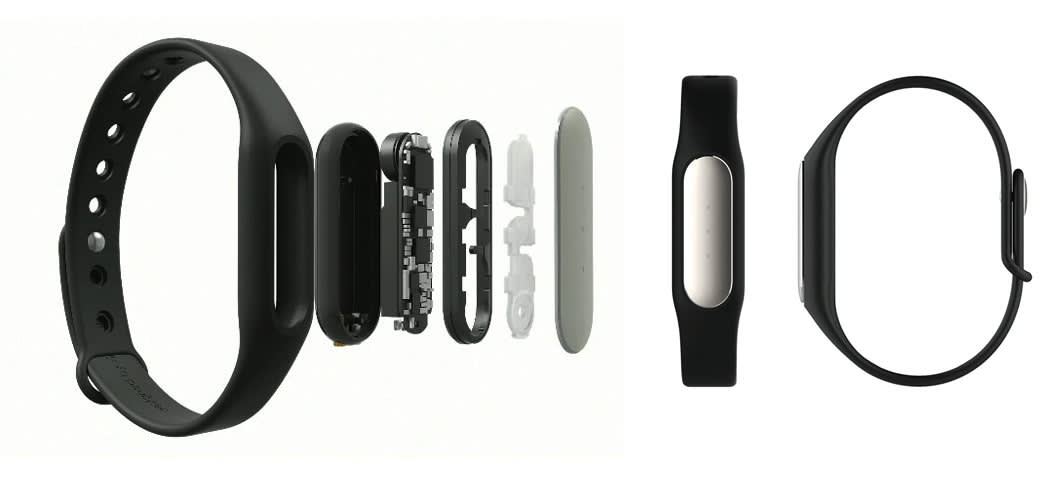
Mi Smart Band 1
This smart band comes with an ADI accelerometer, a premium-quality Dialog Bluetooth chip and an ultra-thin 8 mm battery, providing an extra-long 30-day battery life. In terms of its hardware design, the internal sensor space is extremely compact to minimize overall size while maximizing wearing comfort. Externally, the micro-perforations and CNC milling elevate the metallic sensor cover plate to the level of a fine piece of jewelry. When combined with the tactile softness of its colorful TPSiV band, the overall result is a simple, bright style. Introduced in 2014, this was Xiaomi’s first band product. The Mi Smart Band 1 seamlessly integrates with MIUI for unique phone unlocking (fingerprint and facial recognition were not yet available), providing an unparalleled user experience. And at a retail price of only CNY 79, the Mi band soon became a real industry disruptor.
As we accumulate more knowledge and experience, we gain a certain degree of confidence when communicating with the engineering team and the product manager. We can come up with the most impressive, feasible solution and work hard alongside the engineers to solve the problems encountered. Through long term collaboration, many of the engineers will have our backs, and actively help us overcome issues.
You once said: "Business models profoundly affect product definitions". It is Xiaomi’s mission to make good products that are "The absolute best for less". To achieve this, what is the biggest challenge from a design perspective? What factors need to be considered when designing?
LN: "The high performance price ration" means that the BOM (bill of materials) cost control is strict, which is the biggest challenge we face when designing. It's a factor that must be considered. However, I think the design itself should be carried out under specific prerequisites. If there are no restrictions at all, the lack of limitations actually makes filtering process more difficult. Therefore I think designing under this business model is a good thing in a sense.
Of course, the ultimate cost control makes the design process somewhat painful. Especially when we have a good proposal, then because of cost constraints, we have to scale it back. Given designers are accustomed to pursuing aesthetic perfection, a little bit of imperfection will make uncomfortable.
Yet fortunately, we design with a humble mentality. Our design concept is to try to be as simple and unassuming as possible and minimize unnecessary decorations. Therefore, in terms of concepts, we are not designing lavishly. Meanwhile, a better understanding of production process helps to save costs as much as possible without affecting product performance. This may include reducing the number of parts and the difficulty of assembly.
If the appearance and performance are compromised to the point below the base line, that is not acceptable. When this happens, we must "defend our corner" and not accept the proposal. Remember, Xiaomi's users want products that are good-looking, easy-to-use, high-quality, and affordable. They are not after the very cheapest product available. What we compare is the relative price-performance ratio, not the absolute low price. If we can achieve 1,500 yuan for a 6,000-yuan product, isn't the price-performance ratio very high?
Xiaomi is a high-tech company with a “fan culture”, a rare occurrence. Xiaomi's vision is for its customers to also be their friends. Is it also a goal to maintain communication with users and create designs based on user opinions for ecosystem products?
LN: Yes, it is. We have a professional user research team and lots of methodologies to do user research. While developing the hardware, we will recruit a small group of users from within Xiaomi to conduct blind tests on product prototypes and review the solutions.
In the trial production stage, we will also do a larger-scale paid internal test. Why do I mention the fact that it is paid? "Paid" means that the user spends money to experience the product, which means that they have expectations and requirements for the product. If the product does not meet their expectations, they will complain to us. If it is a free test, the actual problems with the product may not bother them as much as they haven't invested, therefore defeating the purpose of the testing. To encourage effective feedback from our paying users, the internal test users can win rebate, such as free orders.
After the product is launched, we will also monitor and collect public feedback, as well as feedback from our after-sales customer service team. I will personally go online and read customer reviews and record the fair and worthwhile comments. But something to remember: software, MIUI's OTA (over-the-air downloads) upgrades are relatively more frequent and have lower operating costs, but the cost of hardware design changes after the hardware product is on the market is very high. As for whether it will be adopted in subsequent hardware upgrades, this decision is a relatively delicate process that requires rational judgment and filtering, not just following our emotions.
The Value of Design in the Xiaomi Ecosystem
How do you think that design has contributed to the development of the Xiaomi Ecosystem? Or to put it another way, how great a contribution has design made to the significant successes of the Xiaomi Ecosystem?
LN: Although I am a designer myself, I don’t believe that design deserves the lion’s share of the credit for our achievements. The success of the Xiaomi Ecosystem is dependent on a number of factors, and these include business strategy and product strengths. A product’s design may be the icing on the cake, but the difference that it makes remains very limited.
So how would you describe the importance of design at Xiaomi? Is it seen as of significant importance?
LN: Xiaomi is a product-oriented company, and design serves the product - it forms part of its strengths, and part of our brand competitiveness.
Xiaomi doesn’t specifically highlight the importance of design alone. But the public nevertheless gets the impression that Xiaomi places significant emphasis on design, and that we are very competitive in design terms. I think it stems from the importance that the company’s co-founders and senior management attach to this area, by providing a flexible environment in which designers can apply their expertise to the fullest. It also has its roots in our design team’s perseverance and willingness to work hard - namely, the thorough product research that I mentioned earlier, and the whole-hearted approach to communicating with product managers as well as engineers and technicians, and coming up with a feasible design proposal. All of the hardware and mechanical engineers have gradually come round to this, and design has gradually become a selling point for Xiaomi products. It has become a part of the brand’s value, and receives greater recognition within the company. In a word, Xiaomi attaches great importance to design, but that in turn means that we designers have to produce good designs!

Mi Photo Printer
The clever, integrated design of the Mi photo printer gives its body a small, exquisite and beautiful appearance. Professional dying sublimation printing technology allows 256 continuous color gradation changes in any given printed color point, creating photographic images full of smooth, gentle color.
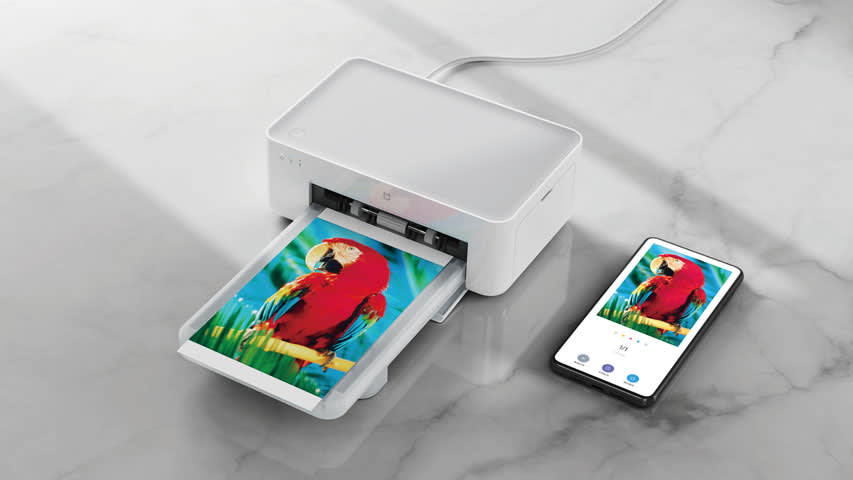
Mi Photo Printer
The Mi Photo Printer supports a variety of wireless connection options, making printing photos simple and flexible. The paper tray also integrates magnetically into the unit body, solving any storage problems
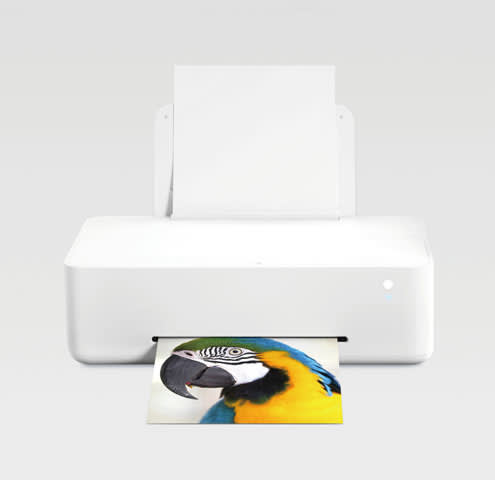
Mi Inkjet Printer
This continuous printer is based on thermal foam inkjet printing technology, and supports wireless printing. Simply connect the printer to the Internet to print remotely at any time, using the phone app or WeChat applet. You can also scan, photocopy or fast-print ID-size photos in various sizes using the phone app.

Mi Inkjet Printer
To replace a printer ink cartridge simply press the cartridge, and it will pop up automatically. Equally, there is a cartridge slot for each color, making replacements very convenient, while keeping your hands clean. The four ink cartridges are concealed within the printer itself, and there are no additional ink feed lines to deal with. This additional reliability enables the printer’s simple overall appearance.
Does design make up a large proportion of the development cost of an Ecosystem product? In China, most “designer” products differentiate themselves through their higher pricing, but Xiaomi has leveraged its strong product quality control to break the inevitable link between “good design” and “high unit prices per customer transaction”, to create well-designed products at reasonable prices. When viewed from this perspective, does this reduce the value of design itself as an activity?
LN: The cost of a design proposal mainly comprises the human resource cost of the designer, and there are a few prototype costs. Design therefore only accounts for a very small proportion of the overall product development and manufacturing cost. The human resource cost of our team of less than 20 people is spread across every product that the company mass-produces, and the sums involved are therefore relatively insignificant. In addition, from another point of view, our minimalist design concepts reduce the cost of materials, thereby reducing overall costs.
As for the link between good design and price, I don’t personally believe that the value of the design is directly equivalent to the price. “Xiaomi aims to let everyone enjoy a better life through innovative technology.” This may mean that our prices are more affordable, but it shouldn’t be taken to mean that they are cheap. Xiaomi’s business model is rooted in high cost performance.
Our ability to achieve this is endorsed by the company’s supply chain management and distribution channels. Assuming that you have to spend CNY 100,000 on tooling costs, this is spread across the millions or even tens of millions of pieces that Xiaomi ships, so that it only makes up maybe one cent, ten cents of the cost of each piece. A small company on the other hand may only be able to sell a few thousand products; this same design cost comes to several dozen CNY when spread across each product, which in turn means a higher selling price. So personally, I don’t really think that good design needs to be expensive. Rather, design should give consumers a sense of premium value.
Innovation Concepts/Initiatives within the Xiaomi Ecosystem
Xiaomi creates innovation which revolves around its users, but as Steve Jobs once said, "A lot of times, people don’t know what they want until you show it to them." Some netizens have come to the same conclusion - namely that Apple figures out what it thinks is best, then gives it to you, whereas Xiaomi gives you whatever you want, whatever everyone else is doing. Which approach do you think is more conducive to innovation?
LN: In a certain sense, I agree with Jobs, as I don't place absolute faith in so-called "user surveys" and "user interview" - it is quite easy to be swayed this way or that by market surveys and user comments, but this reflects a lack of faith in your own strategy, and laziness. Some product managers panic as soon as they read a couple of user comments, and they are frightened that users will start ranting. But isn't this a bit of a halo effect? Most people who have satisfaction or no particular against views on a given matter are quite happy to not say anything, that means that the opinions voiced by a very few individuals can be quite blinding. This is the moment when we actually need professional assessments, otherwise it is very difficult to maintain a firm outlook. For example, a number of people in the internal test group for the Mi Desk Lamp commented that the red line on the lamp was an eyesore. I still remember posting an article on the Zhihu Q&A website, the gist of which was that I didn't care - I thought the red line was great, so we kept it. Regardless of how ugly you think it might be, I will stick to my design. This is not stubbornness; it simply comes from one's professional view of oneself.

Mi LED Desk Lamp:
The LED desk lamp was designed to give it an appearance of ultimate simplicity. The lamp holder, arm and base are all geometric shapes, while the exposed red line adds the finishing touch to the product. The horizontal and vertical lamp arms are made of all-aluminum profiles, giving the product excellence durability with heat dissipation performance. In addition, the product’s assembly clearances and detailing employ the same level of precision as that for mobile phones. The Mi LED Desk Lamp won the 2017 iF DESIGN AWARD (see image above).
Apple's approach to educating the market requires in-depth advanced technological expertise and R&D investment, as well as brand influence. Companies of this kind are extremely rare, but Xiaomi is working hard to move in this direction.
Personally, I don't think that the starting point for Xiaomi products can be defined as giving you whatever you want, whatever everyone else is doing. Xiaomi has always been committed to reaching beyond the products that are currently available, and although you would not necessarily call this technologically subversive innovation, our technology micro-innovations and changes in product format have by no means been easy - take for example the Mi Smart Band 1, Mi Power Strips, or even the Mi Induction Cooker.
The Xiaomi Ecosystem Outlook on Design Talent
When the Xiaomi Ecosystem hires a designer, what areas of ability do you value?
LN: I don’t pay particular attention to the institutions from which the candidates graduated. Instead, I first take a look at their portfolios, their sense of aesthetics, their capability to deal with styling and detail, etc. Only then do I assess whether the quality of their work and experience matches the years of practice in industry. Of course, teamwork and communication skills are also very important.
In addition, an industrial design doesn't only involve the external appearance - it also includes its structure and the user's experience as they physically interact with it, so a holistic view and an awareness of product strategy are also required. This needs to be gradually cultivated, but it also requires designers to have quick learning abilities.
What kind of training does the Xiaomi Ecosystem provide for industrial designers?
LN: First of all, we don't have any form of textbook-based theoretical training; we mainly develop skills by working on actual projects. When reviewing a design, I always talk things through as much as possible, and assess the good and bad points in a rational manner, based on its aesthetics, hardware stacking, mechanism and production processes. In this way, designers gradually become accustomed to thinking about proposals rationally and methodically, then grow naturally as part of this process.
Secondly, we encourage designers to participate in the mass production stage, so they actually go on to the production line and watch the series production process, solve problems on the spot.
Third is the project retrospective. All of our projects undergo periodic retrospectives, where we review the original plan to see if anything is worth improving.
Fourthly, we encourage our designers to participate in competitions and forums, as well as visit exhibitions such as Tokyo's annual Design Week.
(Source: Package & Design, 2020, July Issue, p. 4-27)



